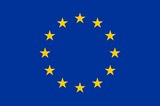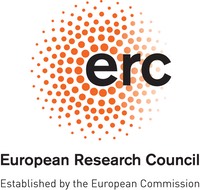WP2: COS & isotopologues measurement program
Activity 2.1: Development of COS-Isotopologue measurement method
A key goal of my measurement program is to obtain information on the spatial and temporal variability of the isotopic composition of COS. This requires the analysis of a large number of samples from different latitude bands, and influenced by different COS sources (tropical oceans, biomass burning, anthropogenic sources) and uptake processes (forests, soils, stratospheric oxidation). The COS isotope measurements will be performed in the Röckmann isotope lab in Utrecht. This group is world-renowned for innovative isotope measurements and regularly receives samples from all over the world for isotope analysis.
A new Gas-Chromatography Isotope Ratio Mass Spectroscopy (GC-IRMS) technique for measuring δ33S and δ34S of atmospheric COS on S+ fragment ions has recently been presented Hattori et al. [2015]. The S+ ion fragment method is sufficiently precise for distinguishing the expected atmospheric variations, which are of the order of a few per mill, especially in the stratosphere [Hattori et al., 2015]. A single air sample from Kawasaki, Japan showed a δ34S value of 4.9 ± 0.3‰, significantly different from the 11‰ that was assumed based on a simple mass balance model of terrestrial and marine sources of COS [Krouze and Grinenko, 1991]. The publication shows that the S+ ion fragment method is feasible and can give the required precision for distinguishing the expected atmospheric variations
Activity 2.2: Sampling and analysis from aircraft, ship cruises, and stations
This setup of Activity 2.1 enables the analysis of a large number of samples, for a first global characterization of COS isotopic composition. We plan a total of more than 300 atmospheric sample measurements. Samples will be taken either regularly or campaign-wise at different locations and for different purposes. We plan to analyse samples from atmospheric stations, ship cruises, and from the stratosphere.
Activity 2.3: AirCore development and campaigns
To better understand the exchange of COS between the troposphere and stratosphere, as well as the decay of COS in the stratosphere, accurate measurements of COS in the stratosphere are essential. However, up to now, such measurements are very scarce and expensive to make [Leung et al., 2002; Krysztofiak et al., 2014]. Together with the RUG, I therefore propose to make high precision tropospheric and stratospheric COS measurements from the surface up to ~30 km using AirCore, with a focus on the tropics, mid-latitudes, and high latitudes. In the tropics, our sampling in Brazil or Australia will team up with a French Balloon program (S. Louvel, personal communication). At mid-latitudes, we will team up with a recently funded EU project RINGO (involvement of RUG & WU). Finally, high latitudes will be sampled in Sodankylä (67°N), where regular AirCore launches are ongoing since 2013.
From AirCore sampling flights currently only profiles of CO2, CH4, and CO are obtained, and recently also isotopes of Δ14C and Δ17O in CO2 have been measured [Mrozek et al., 2016; Paul et al., 2016]. These flights, see Figure for an example, prove extremely valuable for model validation and validation of satellite data and ground-based FTIR measurements.
Regular AirCore profiles of CO2, CH4, and CO from Sodankylä, Finland (67°N) made by RUG and the Finnish Meteorological Institute since September 2013. Different lines denote different profiles taken between September 3, 2013 and November 5, 2014.
Activity 2.4: Lab experiments of COS fractionation in the surface sinks
To
model the budget of COS in WP1 and WP3, the isotope fractionation of the
largest sinks, plant and soil uptake, needs to be known. Recent laboratory
incubation experiments on the degradation of COS by soil bacteria revealed
sulphur isotopic fractionation constants (34ϵ) of –2 to –4‰ [Kamezaki et al.,
2016], indicating
preferential uptake of the lighter isotopologue. In cooperation with the group
of Shohei Hattori (Japan) we will perform experiments to extend this analysis
to (i) COS uptake by C3 and C4 vegetation (ii) COS carbon fractionation (13ϵ). The COS
analyser from activity 2.3 will be combined with flasks measurements for
isotopic analysis (activity 2.2). In the laboratory, we will determine the
sensitivity of fractionation to light levels, soil moisture, and temperature.
Activity 2.5: Analysis of COS isotopologues from ACE-FTS
Profiles of COS and its isotopologues from
ACE-FTS will be analysed. ACE-FTS is an infrared spectrometer that operates since 2003 on
board the Canadian satellite SCISAT. The instrument measures the atmosphere via solar
occultation in which sunlight is used as a light source as it passes through
the atmosphere at sunrise and sunset. The retrieval algorithm first derives
pressure and temperature profiles using an assumed CO2 profile. In a
next step, profiles for e.g. COS and its isotopologues are retrieved using a set
of micro-windows.

